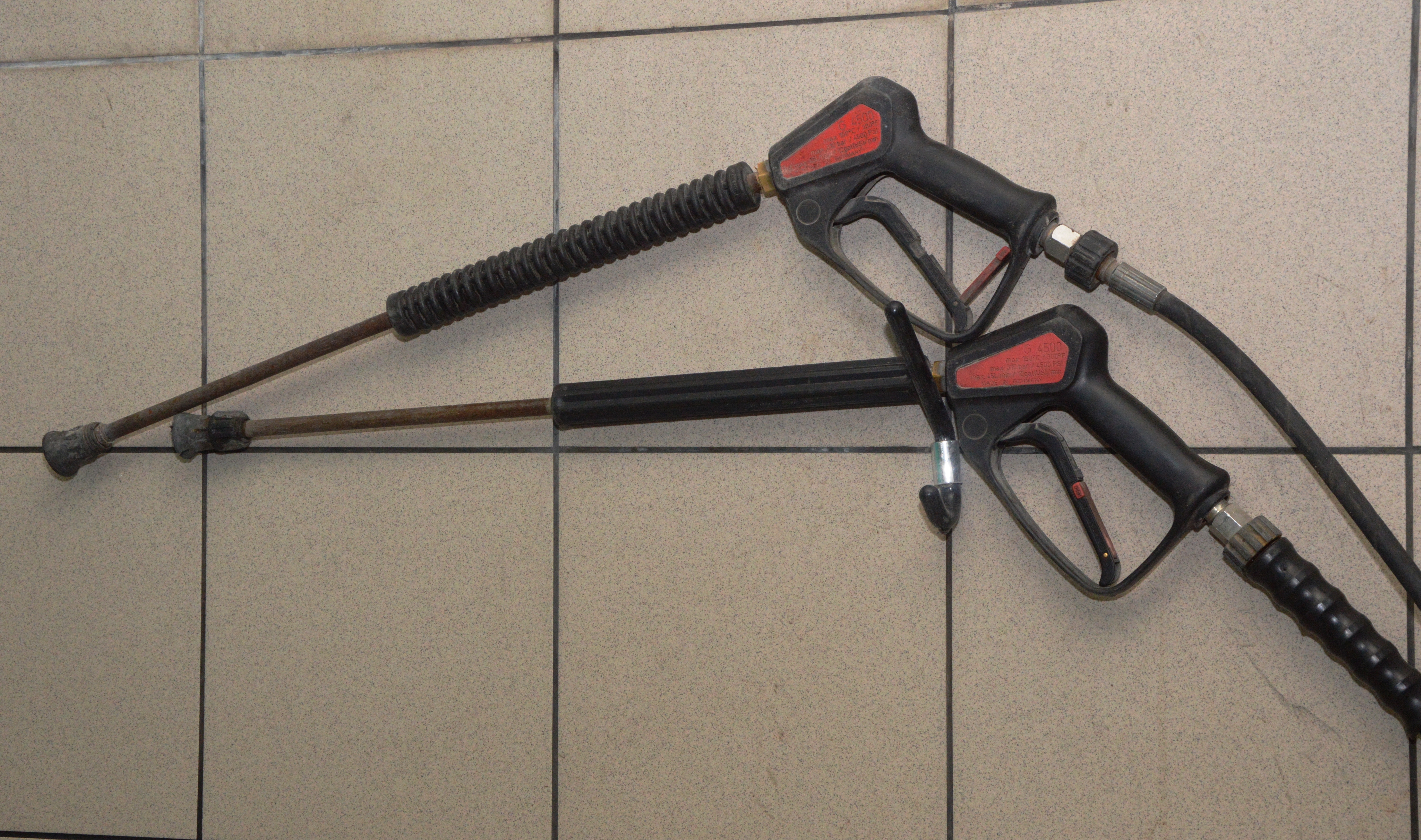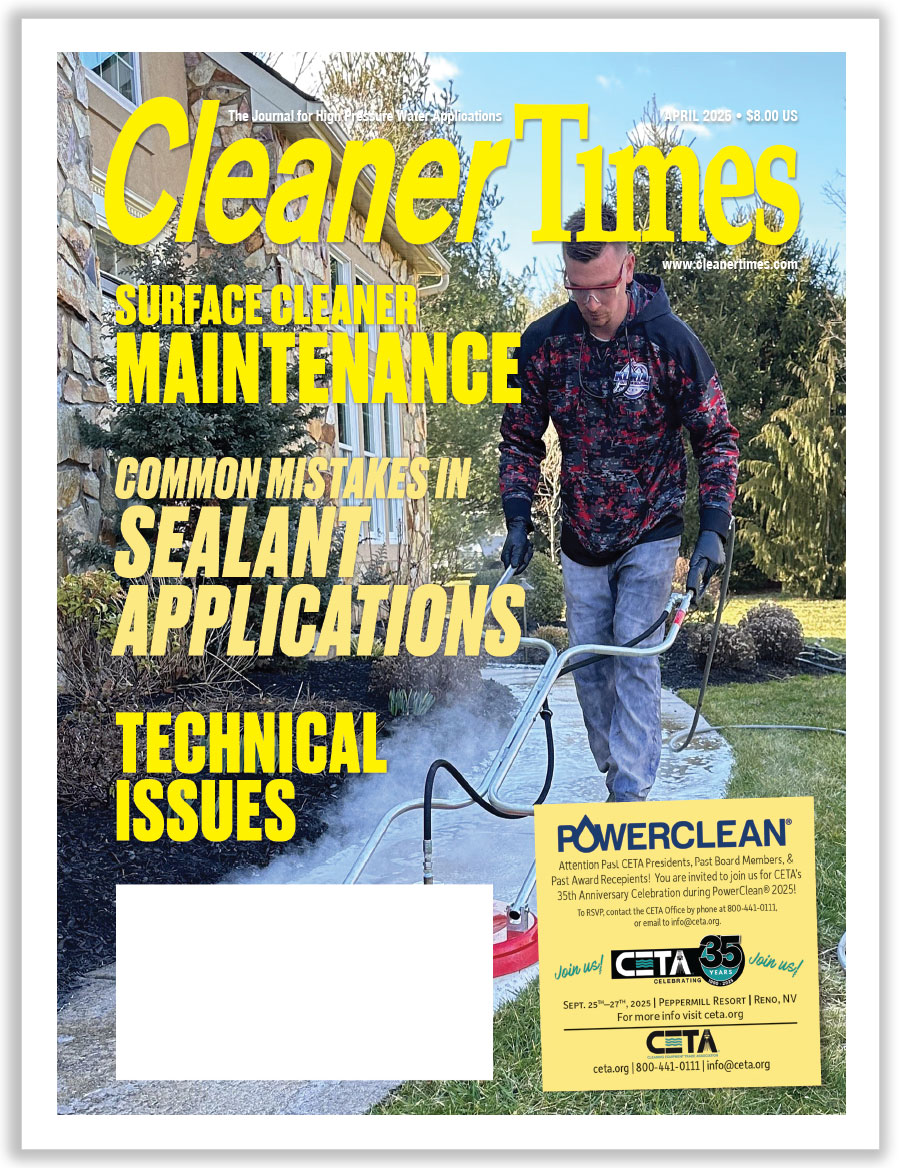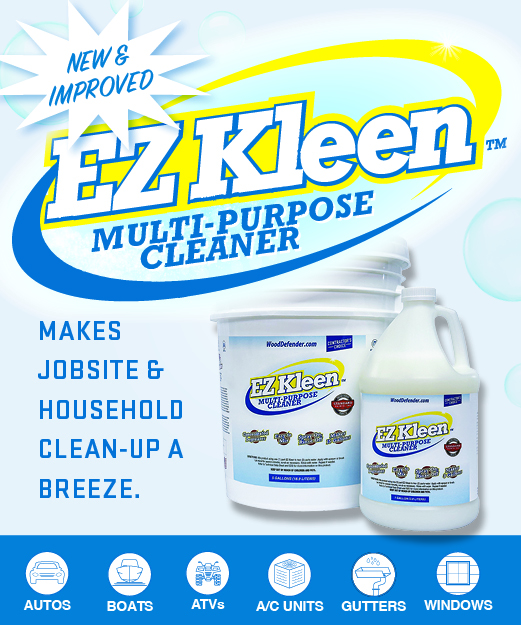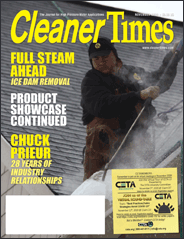
Finding the Best Fit: Spray Guns
by Diane M. Calabrese | Published April 2025

Spoons are interchangeable and so are golf clubs but only in the broadest sense. Although it’s possible to eat soup with a sugar spoon or tee off with a putter, neither match is a practical one. Finding the best fit is the name of the game when choosing a tool to perform a task.
Perhaps nothing is more universal than the quest for ease of use. So, a spray gun that has been constructed with ergonomics in mind gets noticed. An end user welcomes a finger-friendly trigger, for instance.
“We sell all different types and brands of spray guns,” says Brad Howland, president of PowerJet® Pressure Cleaning Systems in Sussex Corner, NB, Canada. “We do not have to promote one over the other.”
Why not? “Our customers know we have a choice in spray guns and buy them according to what they have had in the past, or they try something new,” says Howland.
The easy-trigger sea configuration is popular, a top seller in fact, explains Howland. What’s interesting about it is how little it has changed in the last 20 years.
“If I were to tell a customer to buy a gun, it would be an easy-trigger type for ease of use,” says Howland. The easy-trigger sea design is also used in fishing lines to achieve the objective of taking strain off a finger.
Any feature of a pressure washer that makes it simpler to operate will take stress off the operator. Less stress, less fatigue.
Being able to work longer hours more safely—weariness is very much a safety risk—is a plus for the operator, and it’s a boon to the entire industry.
The optimal spray gun can make a huge difference to achieving the best outcome in the shortest amount of time, with minimal wear and tear on the body and equipment. For contractors who have not been paying much attention to spray gun options, it’s time to start looking at them.
Just as a standard dinner spoon could cross over to meet many needs—soup to sugar—eating becomes a lot simpler when everything is right sized. And for those who really like the challenge of moving a ball down the fairway by using a putter, go ahead. (But do not expect to make any friends among the foursomes that follow.)
Is this a bad analogy because no one cares how slowly a contractor moves on a jobsite? No. The owner of the property who contracted for the work cares very much. An excellent outcome in the shortest possible time is the dream of every property owner.
Know What’s Available
Many spray gun features that simplify life for contractors have been around, but they haven’t gotten the notice they deserved.
“There are many individual features of spray guns that dealers and contractors have started taking notice of,” says Aaron Lindholm, CEO and president of Veloci Performance Products in Burnsville, MN. “Many of these features have been available for some time by manufacturers, but it seems added benefits of these features have only recently become sought after.”
The features virtually shout out the time and energy savings to which they contribute. “Some of these features include stainless-steel internals, built-in live swivels, easy-pull triggers, color options, and spray gun pre-assemblies with quick connect fittings,” says Lindholm.
When selecting a spray gun, an end user should know what he or she wants. It’s not enough to just go to a distributor and ask for a general-purpose spray gun.
“Consider all the requirements when selecting a spray gun,” says Lindholm. There are five that he lists: gpm, psi, temperature, material type, and comfort.
Ensure the gun is suited to the gpm and psi that the operator will be using. And make certain that the spray gun and temperature of water are compatible—i.e., whether the gun can be used with hot water.
Then, there are the chemicals. The composition of the gun must be compatible with any chemicals that will be applied. There should be zero reactivity between a gun and chemical to ensure the chemical is not altered and the gun attains its full lifespan.
Comfort must be in the mix. Lindholm says end users should consider options for relaxed pull, body size, and weight. And Lindholm emphasizes the end user should think carefully about how often the gun will be used. “Will the spray gun be used in short durations or for extended periods of time?”
A spray gun may seem like such a small thing to consider. It’s not.
There’s been a lot of talk recently about the bane of paper straws. Paper straws collapse on themselves. Even if the opening doesn’t close completely in the collapse, there’s a lot more effort required to move fluid through a narrowed opening.
Spray gun apertures will not narrow on themselves, but they may be built too narrow for the routine work of a contractor. “Choosing the correct spray gun can greatly impact speed, efficiency, comfort, and safety of the user,” says Lindholm. “Spray guns are no longer considered one-size-fits-all.”
Get to know the range of designs available. “Everyone should take time to explore the fit and features of today’s generation of spray guns,” says Lindholm. The results may surprise you.”
Manufacturers and distributors want to make the workday the best it can be for contractors. Be sure to know what they have to offer.
Lindholm says that integrated live swivels are an example of a highly functional feature of a spray gun that more contractors should know. “Many don’t understand the added convenience of an integrated live swivel.”
What happens when the integrated live swivel is not chosen? “I constantly see contractors fighting with tangled hoses,” says Lindholm. “This is not only an inconvenience, but also a safety hazard.”
The better solution? “With spray guns such as MTM Hydro’s SGS28 or SGS35, you get an integrated live swivel without the weight and bulkiness of an add-on swivel,” says Lindholm.
Sturdy and Light
How light can a sturdy spray gun be? Well, as light as feasible might be the best way to put it.
Manufacturers of spray guns keep pushing the answer to that question as they strive to make the lightest possible gun that’s also sturdy. End users should carefully assess their options to take advantage of innovative solutions for achieving the balance.
“When choosing a professional spray gun, the aim is to get something more than ‘sturdy,’” says Davide Rizzi, technical support representative with P.A. NAM Corp. in Bloomington, MN. To that end, seek the answers to some questions.
“How long can the spray gun stay watertight, even in harder conditions and with less than crystal-clear water?” says Rizzi. “How many hours can it pull, even with debris, sand, and scale being pushed through high-pressure water?”
Rizzi explains the emphasis that his company puts on watertightness. “Our company’s professional spray guns like the Vega and the RL 30 can remain watertight for their whole lifespan, thus preventing major problems on the other components of the machine, especially the unloader.”
Naturally, Rizzi’s company also keeps the entire constellation of spray gun features in view when designing for the end user. For example, finding ways to lighten up on or reduce repetitive motion tasks protects equipment operators in all sectors.
“The easy-trigger mechanism implemented on the new Facile gun by our company significantly reduces the force to be applied on the trigger when the gun is under pressure,” he explains. “It is a big step forward in terms of fatigue reduction for the operator and the prevention of injury from repetitive motion.
It’s an exciting time for industrial design thanks to the overarching goal to do everything better and more efficiently. AI now helps analyze existing configurations and assists with identification of alterations that improve performance. Ultimately, improvements add up and enhance the experience of equipment operators.
Rizzi explains that his company asks broad questions about how its tools are deployed. Spray guns serve as an example of how the questions develop and are pursued.
“Are there new and innovative fields of application for spray guns?” says Rizzi. “The use of high-pressure water does not stop at pressure washing. Different fields of application such as hydro-excavation, firefighting, or foaming require dedicated, specifically designed spray guns.”
Tailoring a spray gun to its specific niche ensures precision in use. Stainless steel, brass couplers, insulation, etc.—whatever works best. Manufacturers begin at the end, how the spray gun will be used, and design for the use.
They aim for what’s possible and practical. Again, think spoons and golf clubs— much is possible but not always practical.
“Our company was able to understand the needs of new applications and developed reliable, professional spray guns with revolutionary design,” says Rizzi. “There are the Linear 80/280, with its in-line design for hydro-vac, and the LS9 for firefighting—two examples of the big development potential for the spray gun market.”
In every design sector, efficiency, simplicity, and longevity are being integrated. Spray guns are no exception.





